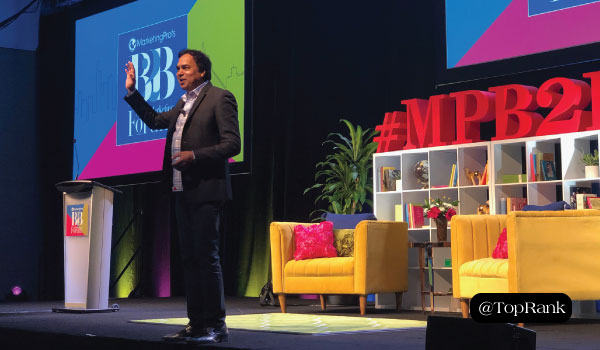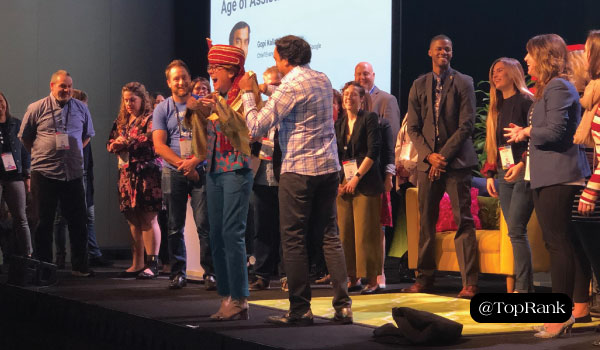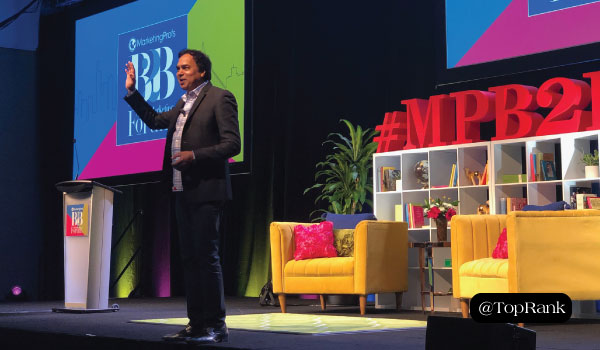This is when he flipped the script and engaged the entire audience in a 5 minute Bollywood dance lesson. Our connection to our devices is changing consumer expectations of all brands and creating some major cultural shifts along the way. Gopi shared that searches for “best toothbrush” have increased 100% in the past year. When you remove the friction associated with content access, customers will consume. Impatience A recent study by Neil Patel showed that if a webpage takes more than 3 seconds to load on a mobile device, half of your customers will abandon your site and move on. Gopi provided a great analogy that applies to B2B and B2C marketers alike: If your website takes more than 3 seconds to load, it’s like you took all of this effort to market your product and bring customers to the door. Today’s customer requires that we show up in front of them and offer assistance. Wise Up Marketers MUST start to look at each of our customers as individuals. Keep in mind that personalization applies just as much to B2B marketing as it does to B2C. Go-Forth & Assist Your Customers While a lot of the examples included in Gopi’s presentation showcased how B2C companies are meeting customer needs, the same rules apply for B2B marketers.

One of the key themes for this year’s MarketingProfs B2B Forum is the importance of ongoing learning. And part of learning is growing. And part of growing means stepping outside of your comfort zone.
Gopi Kallayil, the Chief Evangelist for Brand Marketing at Google opened his morning keynote by encouraging the audience to do things that make you uncomfortable. And to prove his point, he involved the ENTIRE audience. How?
He started by asking the audience to raise their hand if they were either a fan of or expert Bollywood dancers themselves. Then, he asked all those people to join him on stage. Here’s proof that it worked:

After everyone reached the stage he informed the rest of the audience sitting down, that it was their job to judge the group on their dancing skills. This is when he flipped the script and engaged the entire audience in a 5 minute Bollywood dance lesson. And even though I am a bad (if not terrible) dancer myself, it was a fun and engaging experience.
How can the same lesson be applied to our everyday lives?
Consumers are Glued to Their Mobile-Devices
Not only are we all glued to our mobile devices, but we now expect them not just to give information, but to complete actions. To prove his point, Gopi asked his Google phone to complete a simple command: “Play Bollywood dance music.”
It only took his phone approximately four seconds to find and start playing music, but believe it or not, it seemed like an eternity. Something that wasn’t even possible three years ago now seemed inefficient.
Our connection to our devices is changing consumer expectations of all brands and creating some major cultural shifts along the way.
Would You Get in a Car with a Stranger?
Ten years ago, everyone would respond with a strong and resounding “NO!”. But if you ask the average person today, they jump into a stranger’s car at least a few times a month.
Brands like Uber and Lyft have completely changed the narrative and stigma about riding with strangers. The technology behind brands like these has created a series of safety checks and balances to put consumers’ minds at ease.
And this is where the lines begin to blur. Because consumers have a ride, plane ticket or pizza at their fingertips, their expectations have evolved.
3 Major Changes in Customer Expectations
Curiosity
At our…

COMMENTS